Shop with confidence! We've Got You Covered with 90-day Returns.
Shop with confidence! We've Got You Covered with 90-day Returns.
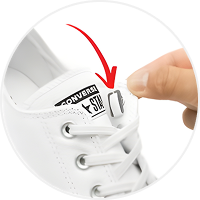
Flat Elastic Laces
No-Tie Shoelaces
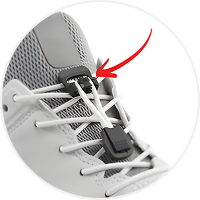
Round Elastic Laces
No-Tie Shoelaces
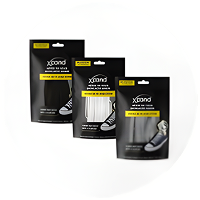
Flat Laces Bundle
5% Pack Savings
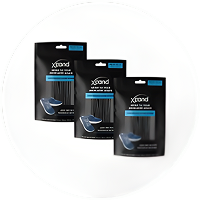
Round Laces Bundle
5% Pack Savings
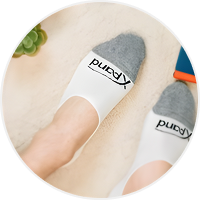
Cushioned
No-show Socks
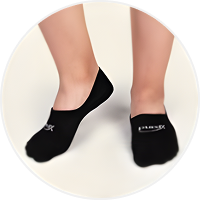
Lightweight
No-Show Socks
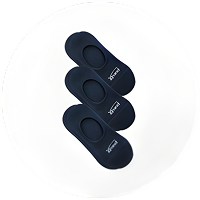
Cushioned Bundle
5% Pack Savings
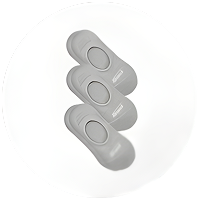
Lightweight Bundle
5% Pack Savings
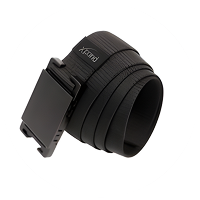
Magnetic Aluminum Urban
Elastic Belt
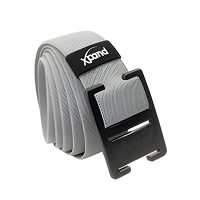
Aluminum Explorer
Elastic Belt
 0
0
BIGGEST DEAL OF 2025 - Use Code 'BFCM30'
Free shipping on orders over $35
See All Offers
All Offers
BIGGEST DEAL OF 2025 - Use Code 'BFCM30'
Black Friday / Cyber Monday is officially live at Xpand.
Get VIP early access to our biggest sale of the year - it doesn’t get better than this.
Use code BFCM30 and save big on no-tie laces, socks, belts, apparel and shoe wipes.
Don’t wait - these deals move fast!
Limited time only while quantities last.
Free shipping on orders over $35
Enjoy free tracked delivery on orders of $35 or more (after discounts).
1/5
Shop with confidence! We've Got You Covered with 90-day Returns.
No-Tie Elastic Laces
Slip on & off your shoes with ease
No-Show Socks
Designed to hide in your shoes, without sliding
Elastic Belts
Stretchy belt strap for perfect comfort
Best Seller Packs
Enjoy an extra 5% pack savings
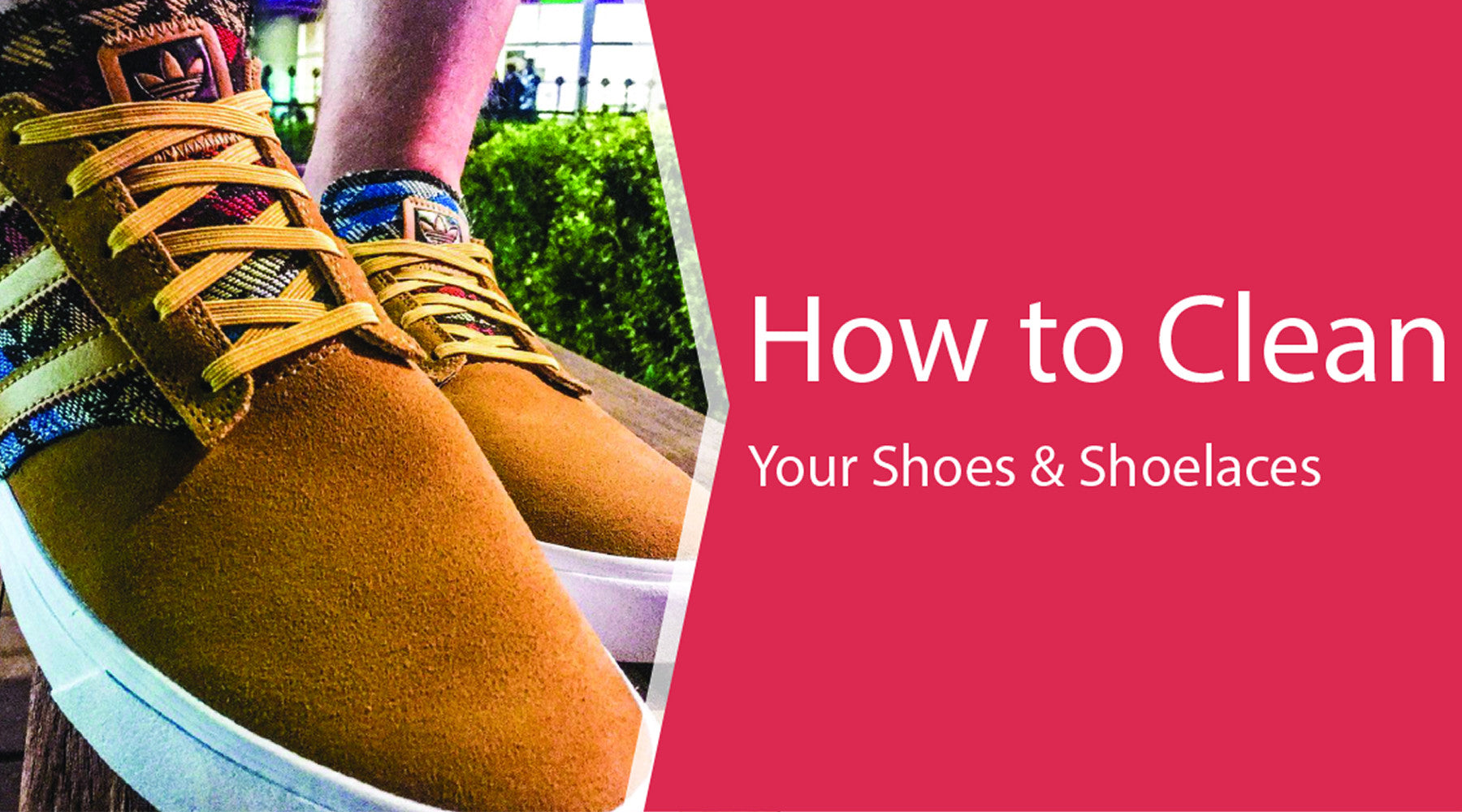
November 14, 2016
Great Tips For Cleaning Your Shoes & Shoelaces
How to Clean Your Shoes and Shoelaces
You invested a pretty penny in those shoes of yours. You’ve broken them in, worn them on your daily runs, hiked to beautiful spots, upgraded your laces, slipped them on for Saturdays in the park and worn them to walk the dog before sunrise. Now they’re filthy and smelly … but you can’t bear to pitch them just yet.
Fortunately, most of today’s shoe manufacturers make their products strong enough to stand up to whatever you throw their way, and that includes a good cleaning now and then.
How important is it to clean your shoes? Very, actually, and the sooner the better — because, well, germs will take over otherwise.

Here’s a disgusting fact: A recent study by the University of Arizona found nine infection-causing bacteria on people’s shoes. To put that into perspective, that’s dirtier than your average toilet seat — and in nearly every case, those bacteria transferred to floors — especially carpeting. Cleaning shoelaces and shoes regularly helps to alleviate the spread of those germs.
Let’s not forget about the odor inside your shoes, either, from the accumulated sweat and germs on your feet. Plus, the sooner you wash stains on the exterior of your shoes as well as your shoelaces, the better. The longer you wait to clean dirt and spills from your shoes, the harder they will be to clean.
So now that we’ve sufficiently motivated you to wash those shoes, let’s talk about how to clean shoes and shoelaces to remove stains and odors while retaining their shape, strength and comfort.
Start on the Right Foot
The best way to clean shoes is to start before ever putting them on your feet. Invest in protective sprays or wipes. For fabric, try a pretreating spray for fabric that repels stains and splashes. Scotchgard Fabric Protector is one such product, but there are numerous other similar products on the market you can spray on shoes prior to wearing them to protect them against water and stains.
For leather, you’ll want to purchase a kit that contains a cleaner, a conditioner, polish and a silicone-based waterproofing spray or wax to protect the look of the leather from being damaged by water. You can find kits that contain all the products you need at once, including a cloth or sponge — Leather Therapy and Kiwi are two brands that sell such kits.
Suede and nubuck stain even more easily, so applying a suede protector is even more important. Many shoe designers offer these products as well upon shoe purchase, such as Clarks and New Balance.
To apply a protective spray, be sure you are in a well-ventilated area — outside is preferable — and that you maintain about a six-inch distance between the nozzle and the shoe as you apply it evenly and thoroughly to all of the shoe fabric. Let shoes air dry for 24 hours before wearing them, taking care not to dry in direct sun, which could cause discoloration.

Pretreating your shoes can go a long way toward keeping your shoes clean and free of stains. Of course, another way to keep shoes clean is to avoid wearing them to dirty places where they run the risk of staining.
But that’s in an ideal world. You need to get your shoes clean now, right? Here are our tips.
Shoe Cleaning Supplies
You should probably have a few supplies on hand when you’re ready to clean a pair of shoes or your shoelaces, so you’re prepared to clean a tough stain or remove stuck-on dirt right away, before it sets. Here are a few things you should have standing by in your shoe-cleaning kit:
-
A shoe brush — You’ll want a brush with stiff bristles to remove heavy soiling from the shoe upper. Hog bristle is great for fabric because its stiff bristles really get into the nooks and crannies of a shoe. Synthetic bristles work well, too, but not on sensitive or delicate shoes. This type of brush is best for athletic shoes, hiking shoes or work boots. A leather shoe or something more delicate needs horsehair — a softer natural fiber that is more gentle. Some brushes have tapered ends you can use to scratch off mud or get into tight spaces.

- A toothbrush — This small brush allows you to get into tight spaces, such as the seam between the shoe upper and the sole or in between the treads on the bottom of the shoe. Cotton swabs and toothpicks are good for this, too.
- Nonabrasive cloth — Opt for chamois or some other cloth for wiping shoes. Look for portable, prepackaged shoe wipes to clean messes while you’re on the go. Jason Markk-brand prepackaged, portable shoe wipes have a plain side for simple spot removal and a more abrasive, textured side for tougher stains. Keep them in your purse or backpack so you aren’t stuck next time you splash your drink on your shoes or accidentally step in mud. (Note: Baby wipes may be used in some cases as well, but they may stain, so try only a small sample that isn’t visible first to be sure it won’t make your problem worse.)
- Sponge — Use a clean sponge for scrubbing shoe fabric with laundry detergent and water.
- Mr. Clean Magic Eraser — These are ideal for removing dirt and scuff marks from soles and the rubber along the sides.
- Spot remover — Something like Spray ‘n Wash or Resolve works well for fabric shoes.
- Leather cleaner — You can’t use soap on leather, so pick up a bottle of leather cleaner from a shoe store or shoe repair shop. Lexol pH is one good brand that cleans leather gently, though other brands work well, too.
- Household natural cleaners— Natural cleaners including white vinegar, baking soda and lemon juice, make great DIY shoe cleaners for fabrics, and they help remove odors from insoles.
- A mesh drawstring bag — This is for washing shoelaces. A pillowcase works, too, knotted to keep it closed.
- Anti-grease soap — For shoes that cannot withstand the washing machine, you’ll need a soap that’s safe for scrubbing the outside of your shoes and that will remove the grease and stubborn stains your shoes naturally pick up. Dishwashing liquid is a good, affordable option.
- Heavy-duty laundry detergent — Some athletic shoes can be washed in the washing machine.
- Fabric softener sheets — They’re not just for laundry! Place one inside each shoe when not in use, and even the most stinky shoe will be smelling like a meadow by morning.
- Newspaper, washcloth or paper towels — Crumple them up and stick them inside shoes to help them retain their shape while air drying.
You might also consider purchasing a special shoe-cleaning product, such as Jason Markk’s shoe cleaner, Angelus or Shoe MGK, which go on with a wet brush and scrub away stains. Instead of an anti-grease soap, you’ll use this cleaner with water. Just scrub, air dry and done. You can still clean your shoes without these specialty products — and these tips we’ve provided here are for doing just that.
Now that you have the materials on hand to clean your shoes, let’s get started with these tips for cleaning shoelaces and most types of shoes.
How to Wash Shoelaces
Your shoelaces are often the dirtiest part of your shoes. They drag on the ground, get splashed and spattered with muck and germs and then spread the germs and muck to our hands when we tie them. Those germy laces drag along our floors, distributing the germs in our homes. Sometimes simply buying a new pair of laces (they’re pretty inexpensive), or removing your laces and washing them gives your shoes enough of a facelift.

The best way to clean shoelaces, if they’re cotton or some other washable material such as nylon or polyester, is to toss them in the washing machine. First, brush off any loose dirt or grime from the laces with your shoe brush or toothbrush. Place them inside a mesh bag — if you have a bag you use to wash bras and panties, use this — or even a pillowcase that’s tied with a string or knotted to keep it closed. Otherwise, the laces can get wrapped around the agitator during the wash cycle, which can ruin the laces or, worse, damage the machine. Wash them in a regular laundry cycle and air dry them. Don’t put them in the dryer, as this can damage the plastic tips or shrink the laces. After several hours, they usually come out good as new.
If you don’t have a washing machine or if your laces need a little extra love, try this: In a bowl, cup or basin, add a small amount of hot water — about a cup. Use the handle of your toothbrush to swirl the laces around in the water and act as an agitator to help remove some of the loose dirt. If the laces are white, add a small amount of bleach — just a splash — and swirl them around in the water with the toothbrush. Let laces soak for a few minutes, or longer for really stuck-on dirt or hard-to-remove stains. (Note: Don’t touch the bleach solution with your hands, as it can irritate your skin.) Add several drops of dish or laundry soap and stir with the brush. Let them soak for about 10 to 12 minutes.
Once you’re done bleaching shoelaces and they look clean to you, thoroughly rinse them to remove all soap and bleach, then air dry them on a rack or over a towel bar. If the stains aren’t totally gone, you might want to try the process again.
Bleach can weaken the lace fibers, so if you have a shoe-cleaning solution, try washing the laces in a solution of warm water and shoe cleaner instead.
Knowing how to clean shoelaces is great, but here’s a better idea: Toss your plain old tie-up laces and switch to Xpand Laces, which use tension and zero-memory elasticity to enable you to slip shoes on and off without ever having to tie or untie them. No more laces dragging on the ground, no more tripping on untied laces and no more laces to wash.
Now let’s talk about cleaning those dirty, stinky shoes.
How to Clean Athletic Shoes
Most athletic shoes contain insoles or sock liners that can be removed — take these out before you begin cleaning and let them air out. If they’re smelly, sprinkle a little baking soda on them to absorb the odor and moisture. If they’re really stinky, you can hand wash them separately or throw them into the mesh bag or pillowcase with your laces.
Now, the shoes.
First, forget anything you’ve ever heard about washing your shoes in the dishwasher. Sure, the hot water and detergent will definitely remove the dirt, but that detergent is very harsh and is not intended for fabric. It can ruin any leather or faux-leather trim, fade and shrink cotton and synthetic fabrics, even melt the rubber.
Instead, your Mr. Clean Magic Erasers are up to the task of removing scuffs and streaks all around the rubber trim and toes. You can also go old school with a sponge, warm water and soap, scrubbing away the dirt and then rinsing with a damp cloth.
The best way to wash shoes is by hand because it’s safest for the fabric and won’t damage the trim. The most effective clean is with a shoe-cleaning solution, like those mentioned above, or an anti-grease soap. Apply the solution with a wet shoe brush or sponge and scrub the entire outside surface of the shoe upper. Use a wet cloth to rinse them and then let them air dry.
However, hand cleaning takes time and may not be as effective at removing tough stains. Even without a specially formulated shoe cleaner, most running or athletic shoes can be run through the washing machine with few problems, though you should probably check the tag stitched into the tongue or go to the manufacturer website to be sure your shoes can stand up to that kind of cleaning. If they say the shoes can’t handle it, trust them — it’s not worth trying it and potentially damaging your shoes. If they can, though, put shoes inside a mesh bag or pillowcase and wash them along with towels or other heavy-duty items, to soften the blows of shoes banging around inside the washing machine.
If you’re concerned about bacteria or fungus (such as athlete’s foot), you’ll need to use a disinfectant. Pine oil disinfectants are safe to use on athletic shoes without damaging the fabric — Pine Sol and Lysol can easily be found at the store. Just look for 80 percent pine oil. Add this at the beginning of the wash cycle. Make sure to wash any socks or other items that may have come into contact with the bacteria or fungus as well.

No matter what, do not put your shoes in the dryer.The high, dry heat created inside a dryer is just too much for shoes, and it will warp them. The same goes for placing them on a radiator or other heat source. Both can damage the fabric and cause the shoes to become misshapen. For best results, let your shoes air dry — preferably outside, away from direct sunlight, with some crumpled-up newspaper or paper towels, or even wash cloths, stuffed inside to both absorb the moisture and help the shoes retain their shape as they dry. Let the laces and insoles air dry separately, and reassemble the shoes once all pieces are dry.
It might take 24 hours or even longer for the shoes to thoroughly dry, so plan ahead to use a back-up pair. It’s important to wait to wear them so you can prevent bacteria from growing inside due to moisture and to prevent unnecessary odors from forming due to dampness.
And remember, keep the insides smelling fresh with dryer sheets. Place one inside each shoe and leave overnight. They’ll absorb the odors and leave shoes smelling out-of-the-dryer fresh and clean. Keep a box with you when you travel — no more funky shoe odor in your suitcase.
How to Clean Canvas Shoes
An important thing to take note of is that if your shoes are white, it may not be possible to ever get your shoes as white as they were the day you bought them. More than likely some yellowing will occur, but if you protect them ahead of time with a protective spray and clean them as soon as stains begin appearing, you can head off some of the discoloration. Never bleach your canvas shoes — it will definitely cause yellowing, and it could damage the fabric.

There’s also this: Don’t wash canvas shoes in the washing machine. It can damage the structure and fabric of the shoe.
To clean your canvas shoes, remove the laces (clean them according to the instructions above, or just toss and plan to replace them with Xpand Laces) and bang the shoes together to remove any chunks of caked-on dirt or grass. Use a clean shoe brush to remove loose particles from the shoe.
Then, clean the waterproof portions of the shoe first. You can use your Magic Eraser for this, or you can just clean the rubber parts of the shoe — the sole and toe, typically — with a wet, soapy sponge, then rinse the soap off.
Fill the sink or a bowl with warm, soapy water (shoe cleaner or anti-grease soap). Using a clean cloth, towel, sponge or brush, gently rub the soapy water around the canvas of the shoe in a circular motion. Try not to get any of the water inside the shoe. Keep scrubbing until the stains are removed to your satisfaction, then rinse with plain water until all soap is gone.
To get those whites a little whiter, try mixing laundry detergent with baking soda and using that instead of anti-grease soap, brushing and rinsing a lot to remove the cleaning solution.
Don’t have any soap or looking to try a DIY shoe cleaner that’s chemical-free? Mix three parts warm water with one part freshly squeezed lemon and lime juices (nothing prepackaged, which can stain the shoes). Use a wet cloth, sponge or brush to scrub the shoe, then rinse as described above.3

As with athletic shoes, ball up a washcloth, paper towels or newspaper and fill the shoes with them to help them maintain their shape as they air dry. Replace paper products when they are wet, to speed drying and to prevent ink transfer to the shoes. Don’t dry shoes in the direct sunlight or on any direct heat source — and remember to never, ever throw your canvas shoes in the dryer.
How to Clean Leather Shoes
Obviously, you can’t just toss leather in the washing machine, and you need to be careful about getting them too wet or using the wrong soap to prevent discoloration or staining of the leather.
First, before bringing the shoes inside, bang those soles hard against each other to remove clumps of debris. If you have an outdoor boot scraper or doorstep shoe brush, all the better — just scrape the soles along the brush to remove the dirt from the bottoms and sides of the shoes.
If you have thick, chunky soles, you can even run them under tap water. Use a toothbrush, toothpick or paper towel to push the dirt out of the treads and wipe off the worst of the dirt. (Don’t try this with flat, thin-soled shoes.) Take a wet, soapy cloth or sponge and wipe around the sides of the sole as well.

Stuff the shoes with balled-up paper towels or rags so they hold their shape while you work on them. With another clean, damp (not soaking) paper towel, washcloth or rag, gently wipe around the leather upper of the shoe, removing the dirt gently.
From your shoe-care supply kit, take out your leather cleaner and rub a small amount into the leather with a damp cloth. Rub gently in a circular motion into all the cracks and crevices of the leather. After that, polish the shoe with a leather cream or polish (Meltonian is a good brand to try), buffing out scratches and revealing shine. Let the shoe air dry. Protect the suppleness and strength of the leather by using a conditioner on it about once a month.
If your loved ones don’t happen to have a shoe care supply kit, homemaking diva Martha Stewart recommends this great gift for holidays, birthdays or Father’s Day: a wooden box filled with shoe products. Toss in leather conditioner or cream, shoe polishes of different colors, a chamois or other cloth and shoe brushes (light bristles for light-colored shoes, dark for dark-colored shoes, so you don’t confuse your polishes). Most shoemakers and shoe repair stores carry many of these products, or you can find them online.
How to Clean Suede Shoes
Nothing’s harder to keep clean and good-looking than suede or nubuck shoes. They are prone to scuffs, scratches and stains, which are quite hard to remove. Before wearing any suede or nubuck shoes, it’s important to pretreat them with protective spray.
Unlike sneakers or leather shoes, suede and nubuck shoes should be completely dry before you begin cleaning them. Once they’re dry, brush the shoes gently with a soft-bristled brush. Stuff crumpled-up paper towels or rags into the shoes to protect their shape and gently brush away the dirt and mud from the surface, taking care to brush in the direction of the fibers, not back and forth (although stubborn spots may need more vigorous brushing).
You may need to purchase a rubber cleaning stone or suede eraser to treat scuffs or scrapes that can’t be removed with the brush. An emery board may work, too. For flattened or worn-down nap, use the middle wire bristles in a suede brush to reinvigorate the nap, then brush with the other softer bristles. Sometimes, steaming the affected area with an iron or tea kettle opens the pores, making the fibers easier to brush and clean. Just don’t get the steam too close to the shoes or they may become water stained.

Remove the paper or rags from the shoes and they’re ready to wear. Consider storing your suede shoes wrapped in tissue paper in a shoe box to protect the surfaces from being damaged when other shoes are tossed on top of them.
Are your suede or nubuck shoes water stained? It may sound counterintuitive, but you may now be better off cleaning the shoes with water, so that the shoes will look uniform. Wetting them will, in effect, make them stain proof. Place a towel inside the shoes and spray a thin layer of water across the surface of the suede upper. For tough stains, add a little white vinegar to the water. Scrub the area with a shoe or nail brush, concentrating on any water-stained areas to smooth out their appearance. Blot them with a damp cloth to help them dry evenly. Let them dry in a cool, ventilated area, away from any direct heat sources or sunlight.
Regardless of what type of shoe you’re cleaning, if your best efforts haven’t worked and the stains are still there, take them to a professional cleaner — one who specializes in the type of shoe you want cleaned.
Do you know any other great tips for how to wash shoes or shoelaces? Let us know!Also in Xpand Blog
CART (0)
✕ SELECT LACES, SOCKS & SHOEWIPES
4 for $40
6 for $50
8 for $60
FREE SHIPPING ON ORDER $35 AND UP
Your Cart is Empty
Continue Shopping"no-tie-original-elastic-lacing-system","quick-release-round-lacing-system","cushioned-no-show-socks","original-notie-lacing-system","xpand-quick-wipes-pack-of-2","cushioned-socks","free-xpand-quick-wipes","quick-wipes-10pcs","original-notie-lacing-system-v4","original-notie-lacing-system-lp-v6-1","original-notie-lacing-system-lp-v6-2","original-notie-lacing-system-lp-v5-2","original-notie-lacing-system-lp-v4-2","original-notie-lacing-system-lp-v3-2","original-notie-lacing-system-lp-v2-2","original-notie-lacing-system-lp-v1-1","original-notie-lacing-system-lp-v5-1","original-notie-lacing-system-lp-v4-1","original-notie-lacing-system-lp-v3-1","original-notie-lacing-system-lp-v2-1","original-notie-lacing-system-lp-v1-2","cushioned-no-show-socks-copy","cushioned-no-show-socks-copy-copy","ankle-socks","original-notie-flatlaces-3-pack","glow-in-the-dark-flat-laces","freebie-no-tie-laces-black-reflective","lightweight-socks","freebie-no-tie-laces-flat-white",
"no-tie-original-elastic-lacing-system","lightweight-no-show-socks","original-notie-lacing-system","original-notie-lacing-system-v4","original-notie-lacing-system-lp-v6-1","original-notie-lacing-system-lp-v6-2","original-notie-lacing-system-lp-v5-2","original-notie-lacing-system-lp-v4-2","original-notie-lacing-system-lp-v3-2","original-notie-lacing-system-lp-v2-2","original-notie-lacing-system-lp-v1-1","original-notie-lacing-system-lp-v5-1","original-notie-lacing-system-lp-v4-1","original-notie-lacing-system-lp-v3-1","original-notie-lacing-system-lp-v2-1","original-notie-lacing-system-lp-v1-2","original-notie-flatlaces-3-pack","glow-in-the-dark-flat-laces","freebie-no-tie-laces-black-reflective","freebie-no-tie-laces-flat-white",
{ id: null, shopify_product_id: "2009897304175" },{ id: null, shopify_product_id: "2020196581487" },{ id: null, shopify_product_id: "4166139019375" },{ id: null, shopify_product_id: "4167617937519" },{ id: null, shopify_product_id: "7470282244207" },{ id: null, shopify_product_id: "14673415733611" },{ id: null, shopify_product_id: "14703821259115" },{ id: null, shopify_product_id: "14730153296235" },{ id: null, shopify_product_id: "14736987980139" },{ id: null, shopify_product_id: "14736989585771" },{ id: null, shopify_product_id: "14736990667115" },{ id: null, shopify_product_id: "14736991748459" },{ id: null, shopify_product_id: "14736993517931" },{ id: null, shopify_product_id: "14737004593515" },{ id: null, shopify_product_id: "14737006035307" },{ id: null, shopify_product_id: "14737006133611" },{ id: null, shopify_product_id: "14737007116651" },{ id: null, shopify_product_id: "14737008296299" },{ id: null, shopify_product_id: "14755288744299" },{ id: null, shopify_product_id: "14755288777067" },{ id: null, shopify_product_id: "14755289006443" },{ id: null, shopify_product_id: "14766251213163" },{ id: null, shopify_product_id: "14776631427435" },{ id: null, shopify_product_id: "14791250149739" },{ id: null, shopify_product_id: "14846692196715" },
3--1.79
6--2.39
7--2.99
9--3.59
1--0




